Sometimes, the artistic stars align and the right people find themselves
collaborating on the right work in the right place at the right time. Such are
the happy circumstances in which OperaGlass Works present their debut
production here at Wilton’s: Stravinsky’s The
Rake’s Progress. The history of the opera, its story and that of the
creative team behind the production are like the threads of a web, connecting
people, places and times. If ever an opera was meant to find its way to
Wilton’s stage, this must surely be the one.
A Perfect Fit
Igor Stravinksy was inspired to write his only full-scale opera after seeing William Hogarth’s celebrated engravings in 1947. The artist, satirist and social critic engraved the series of eight scenes for print shortly after painting his original canvasses in the early 1730s. This second of what he referred to as his ‘modern moral subjects’ depicts the fate of Tom Rakewell, who inherits his miserly father’s fortune only to squander it twice, finally sinking into madness and ending his life in the Royal Bethlem Hospital in Moorfields, or Bedlam as it became known.
Stravinsky invited his fellow émigré to the US, W H Auden, to write the libretto for The Rake’s Progress, a commission which the poet felt to be one of the greatest honours of his life. Auden enlisted the help of his companion, the poet, translator and opera-lover, Chester Kallman. The two had met shortly after Auden moved to New York in 1939. Kallman was 18 and beautiful and Auden, 14 years his senior, fell hopelessly in love with him. Their ‘marriage’ (as Auden liked to think of it) was, however, short-lived as Kallman soon proved himself utterly incapable of sexual fidelity - a true rake, in fact. Despite this, they remained friends and even shared a home until Auden’s death in 1973. The opera was premiered at Venice’s Teatro La Fenice in 1951, followed by major productions in Paris and New York.
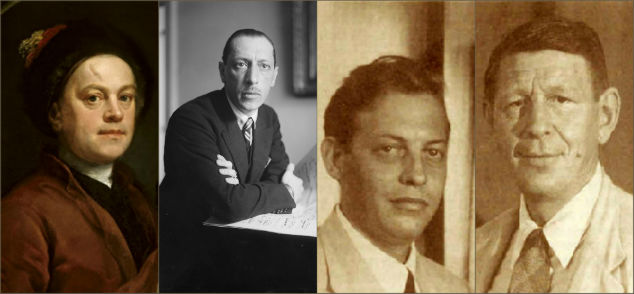
L-R: WIlliam Hogarth, Igor Stravinsky, Chester Kallman, Wystan Auden
The libretto is only loosely based on Hogarth’s story but shares its irony that Tom’s ‘progress’ is, of course, precisely the opposite. His lust for money and the high-life leads him to turn his back on his virtuous betrothed and head to London with the mysterious Nick Shadow, who turns out to be the Devil. He descends into debauchery, debt and prison, finally losing his mind and his life as well as his money. He becomes addicted to drink and gambling. He frequents brothels and the dens of iniquity that were precursors to the Victorian pubs and music halls condemned by the Methodists, who saw themselves as rescuing Wilton’s from the Devil’s hands when they took possession of the building in 1888. Just one of the reasons OperaGlass Works set their hearts on staging The Rake's Progress within these walls, with their evocative dilapidated grandeur to heighten the sense of decline and decay.
The company of directors, singers, musicians, actors and designers has been a long time in the making. They are friends, collaborators and seasoned professionals. Between them, they have a wealth of experience, skills and talents to complement and feed each other, dovetail and come together to create something very special. Their mission is to bring about change in the world of opera. They want to present world class, highly engaging productions in exquisite and intimate spaces. They want to do away with the fourth wall and put the performers back in contact with the audience. They want to reintroduce the immediacy of 18th century theatre and opera, with performers talking and singing directly to those watching, rather than at them from a physical and artistic distance.
OperaGlass Works was founded by Selina Cadell and Eliza Thompson, who discovered Wilton’s charm when they collaborated here on Congreve’s The Way of The World in 2003. Selina is not only a respected actor on stage and screen (you may have seen her in The Dresser in the West End, The Habit of Art at the National or in ITV’s Doc Martin) but also a director specialising in 17th and 18th century theatre and opera. She is Head of Drama at National Opera Studio (who presented Dubai – Rostov - New York at Wilton’s in May) and a regular coach at the Royal Opera House. Eliza is a composer, arranger and music supervisor and consultant for film, television and theatre. Together, they have worked on Love for Love at the RSC, The Rivals at the Arcola, Handel’s Arianna in Creta at the Britten Theatre and the film The Madness of King George, to name only a few.
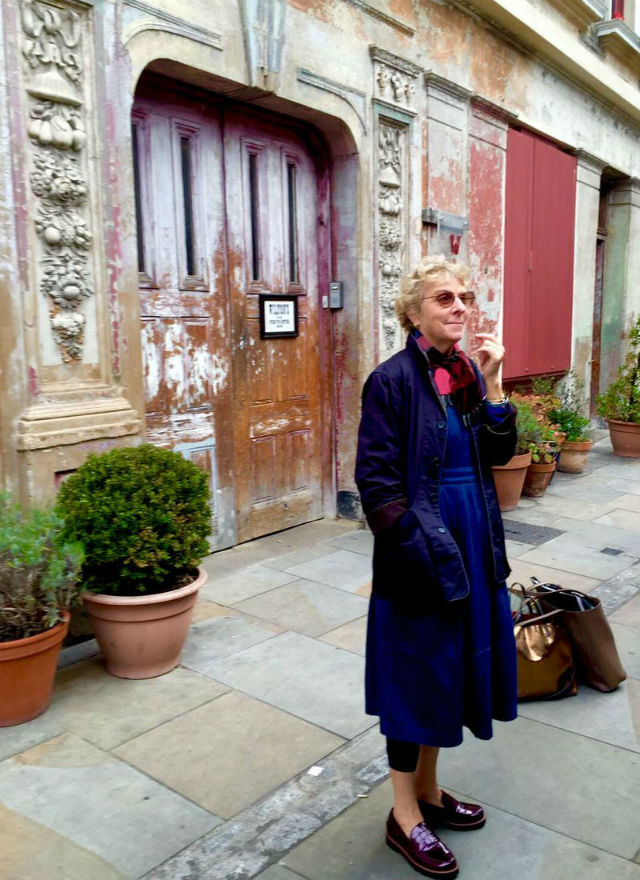
In the Right Place: Selina arrives at Wilton's
Their methods are more akin to development and rehearsal for theatre than for opera. As Eliza explains, 'Singers spend most of their time perfecting their singing technique without the opportunity to explore how they can liberate that technique by learning acting methods'. Rehearsal periods will be lengthy to allow a full exploration of the irony and depth of text as well as score and, as Selina pointed out in day two of rehearsals: 'when you start to examine the words, it’s like peeling an onion, uncovering layer after layer of meaning and context'. The process is intensely collaborative for everyone involved and the team Eliza and Selina have brought together make for an extraordinarily rich mix.
Laurence Cummings, who will conduct on stage from his harpsichord, is one of this country’s foremost experts in historical performance and has been Artistic Director of the London Handel Festival for almost 20 years. He has conducted for countless opera companies and orchestras. For The rake’s Progress, he will lead the Southbank Sinfonia, a group of 33 outstanding graduates from all over the world. Here he is playing Air Harpsichord at his first costume fitting:
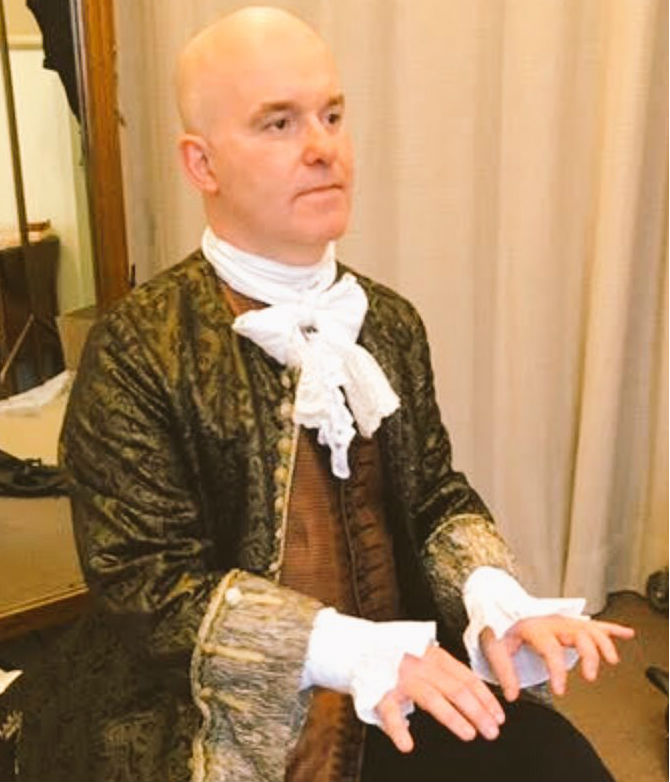
Tom Piper is one of the most sought-after designers in theatre today. He has been Associate Designer for the RSC since 2004, has won many awards including an Olivier and is renowned for the famous poppies installation at the Tower of London. He also happens to be designing The Box of Delights for Wilton’s this Christmas. Costume design is by none other than BAFTA winner, Rosalind Ebbutt, whose amazing work for ITV has included Victoria, Downton Abbey and Foyle’s War. And the principal cast is positively dazzling: Robert Murray, Susanna Hurrell, Jonathan Lemalu, Stephen Richardson, Penelope Cousland, Harry Nicoll. We are deeply honoured to host such an extraordinary debut production.
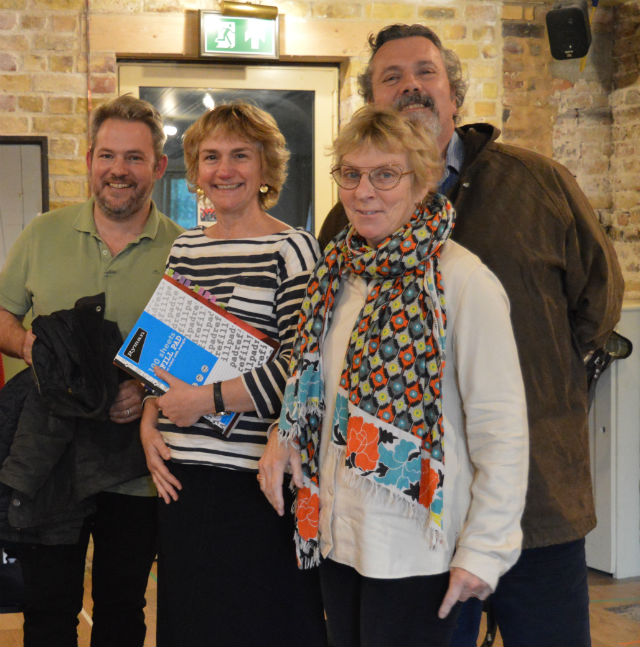
L to R: Robert Murray, Eliza Thompson, Selina Cadell, Stephen Richardson - still smiling at the end of a hard day's rehearsals!
Although written in a post-war avant garde period, Stravinsky’s score is widely held to be his most melodious composition, borrowing from historic operatic conventions whilst remaining a distinctly modern work. Composer Thomas Adès conducted The Rake’s Progress at Covent Garden in 2008 and proclaimed it to be 'one of the greatest operas there is'. A bold statement for an exceptional work, and Hogarth’s moral tale has been inspiring similarly significant artistic responses for almost three hundred years. To list just a few 20th century examples: Gavin Gordon and Ninette de Valois’ 1935 ballet designed by Rex Whistler; David Hockney’s etchings of the same title (he also designed the 1975 production of Stravinsky’s opera at Glyndebourne); Grayson Perry’s tapestries, The Vanity of Small Differences; and Yinka Shonibare MBE’s photographic tableaux, Diary of a Victorian Dandy. Hogarth was a founding governor of the Foundling Hospital and, in 2014, the Foundling Museum marked the 250th anniversary of his death by showing Hockney, Shonibare and Perry alongside a new commission from Jessie Brennan. Brennan’s A Fall of Ordinariness and Light explored the concept of ‘progress’ in the context of gentrification in the deprived London Borough of Tower Hamlets – home to Wilton’s Music Hall. The Foundling Museum’s exhibition guide described A Rake’s Progress as 'an unflinching portrayal of the corruption, hypocrisy, vice and occasional virtue of eighteenth-century London'. Such perennial themes continue to strike chords today and an opera that questions whether it is love or money that is more important will forever be relevant.
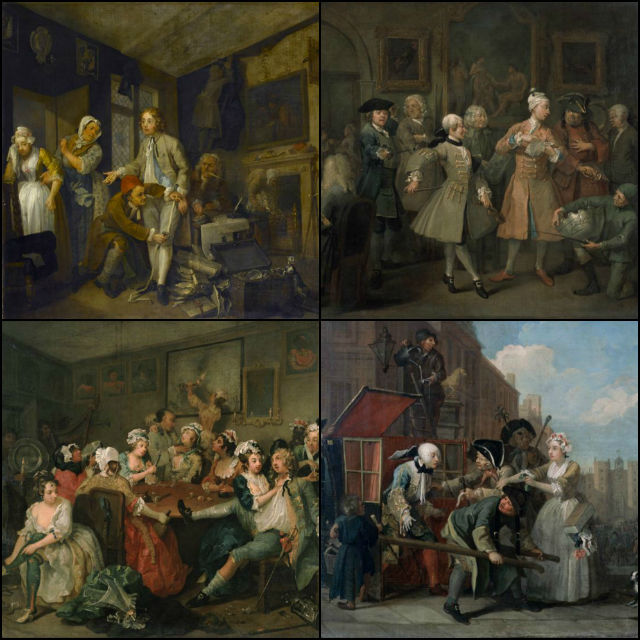
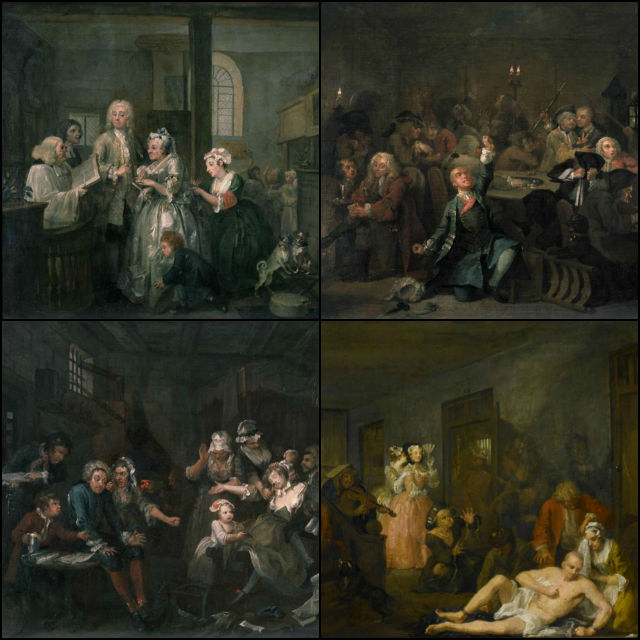
If you fancy taking a look at Hogarth’s original paintings before enjoying OperaGlass Works’ production, you can find them on display in the Sir John Soane’s Museum, where they have been since 1810. Then why not hop over to to Leicester Square and say hello to the bust of Hogarth himself?
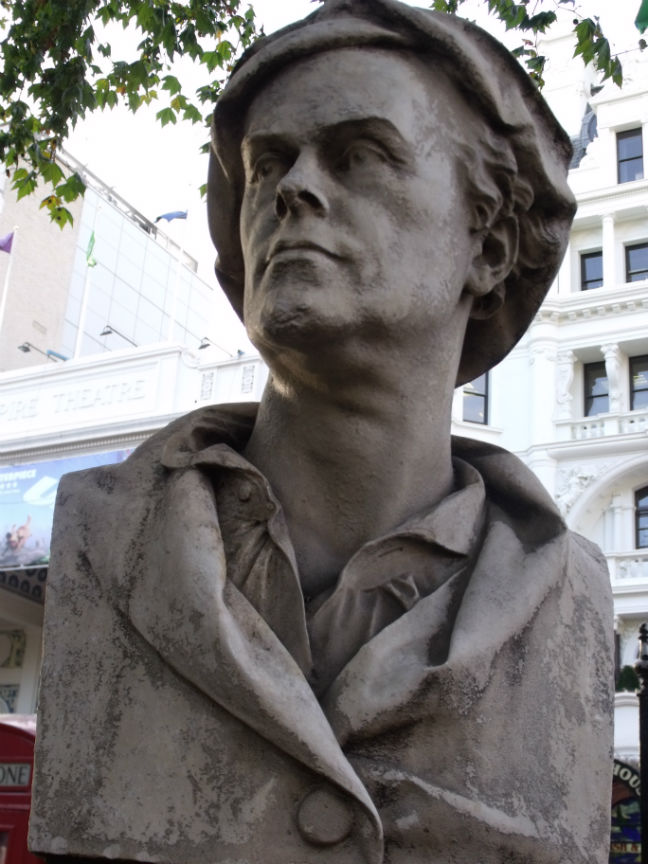
The Rake’s Progress runs 17th to 25th November and you can buy tickets here.
